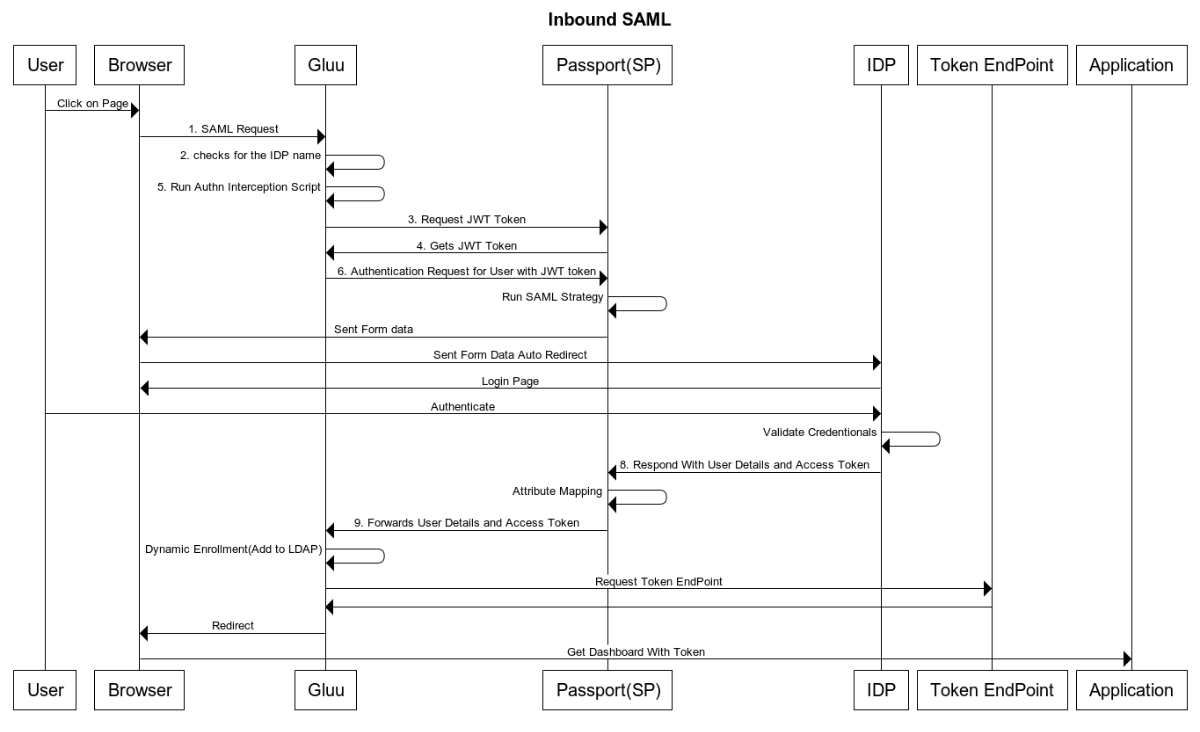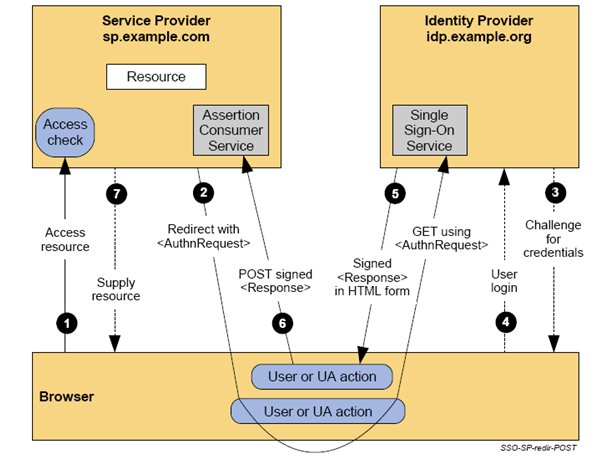

access token: The token issued by the authorization server (Okta) in exchange for the grant.Each OAuth grant has a corresponding flow.
#Saml sequence diagram code
Examples of grants are authorization code and client credentials.

Note: If you require a completely custom app setup and workflow with direct access control to your Okta org and app integrations, then you can use the Authentication API. To get started with auth implementation and find sample apps, see Sign users in. OIDC extends OAuth 2.0 by providing user authentication and single sign-on (SSO) functionality.įor most of your app auth requirements, we recommend that you use the OAuth 2.0 and OIDC protocols through the different solutions Okta provides, as outlined in Redirect authentication vs. OAuth 2.0 enables you to delegate authorization, while OIDC enables you to retrieve and store authentication information about your end users. The OAuth 2.0 protocol provides API security through scoped access tokens. The OAuth 2.0 protocol controls authorization to access a protected resource, like your web app, native app, or API service.

It's also more opinionated than plain OAuth 2.0, for example in its scope definitions. The OpenID Connect (OIDC) protocol is built on the OAuth 2.0 protocol and helps authenticate users and convey information about them. There are two main types of authentication that you can perform with Okta: embedded for more information on the specific types of authentication deployment models that Okta provides that are built on top of OAuth 2.0 and OIDC. Note: See Okta deployment models - redirect vs. This article discusses how you can implement flows based on these standards using Okta, and what flows and grant types are commonly used by the different types of apps. I've done it a couple times in Java.This article provides a high-level introduction to OAuth 2.0 and OpenID Connect (OIDC), which are the standard protocols that Okta's authentication and authorization solutions are based on. Wikipedia has a nice sequence diagram to demonstrate this and of course you can peruse the many docs on the Oasis SAML docs website. I'm not a Python dev, but I found this with some googling: onelogin/python-saml. As suggested above, use a library, preferably one that has been through the the test of time. At this point your user is authenticated and you would create a session on your server or you create a JWT token to identify your user from within your angular app to the Python backend.Ĭreating the SAML request token and processing in the resultant SAML response token is not trivial. The token will minimally identify the user, but can contain authorizations and additional info. Upon receipt of the SAML request token, your server validates the token via digital signature, and you treat the user as logged in (again, use a library for this part). Once the user is authenticated, the identity provider creates a SAML request token which is presented back at your server via a redirect. Once the token is verified, the user is asked to log in (if they are not already authenticated there). The identity provider verifies the SAML request token via digital signature. The server determines if the user is already authenticated (has a session, JWT token, etc), and if not, creates a SAML request token to be sent via a redirect to the Identity Provider (use a library for this). The basic exchange of SAML starts with a user asking for a resources (page, SPA app) on your Python server.


 0 kommentar(er)
0 kommentar(er)
